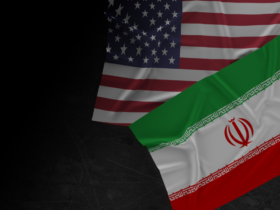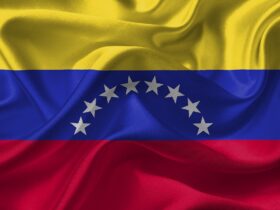This is a systemic conflict.
This is a systemic conflict.
By Sergio Rodríguez Gelfenstein
We don’t know the impact the Trump administration’s imposition of 10% tariffs on their exports will have on the inhabitants of Heard Island and McDonald Islands. We’ll likely never know, because the population of those territories consists solely of penguins, seals, turtles, and seabirds. It’s been more than ten years since a human last set foot on these 412-square-kilometer rocky islets located halfway between Australia and Africa, whose economic activity, sustained by the production of elephant seal oil and seal hunts, ended in 1877.
This decision allows us—in some way—to understand the scale of the recent measures taken by the United States to unleash a “trade war” against the world, which represents a true systemic catastrophe whose consequences are yet to be seen. This exercise doesn’t seem easy; seasoned economists speak of the “end of globalization,” a “systemic catastrophe,” or “the destruction of the world trading system due to a basic economic fallacy,” according to renowned Columbia University economics professor Jeffrey Sachs, who says that Trump mistakenly claims the US trade deficit is due to the rest of the world having cheated it.
Another authoritative opinion, that of the American Economic Association, states that “the formula used to set tariffs, published by the Office of the United States Trade Representative, is flawed and lacks economic logic,” asserting that “the tariff calculation is not supported by either economic theory or the legal framework for international trade.” This prestigious institution believes that if the calculation errors were corrected, the country’s economy could be boosted, favoring trade liberalization and reducing the risk of a possible recession.
So, Trump’s actions have no theoretical basis, not even in the economic doctrine of capitalism. However, this isn’t a simplification, saying that what’s happening is completely crazy. I don’t believe it; I don’t believe the world is suffering a severe systemic collapse due to a psychiatric dysfunction of the head of the administration of the most powerful country on the planet.
I think everything follows a coldly conceived and calculated plan. Politics is a rational event in which the subjective has greater or lesser influence depending on the role of the actors, whether individual or collective. But when the irrational surpasses the tangible, we are faced with a situation that goes beyond the normal limits of analysis. Psychiatrists and psychologists would have to transform themselves into social scientists to explain what is happening.
It’s not about madness, but rather about stupidity, folly, insanity, or whatever you want to call it. And these are not traits that characterize a mental illness, but rather expressions of capitalist arrogance and arrogance as a response to a situation in which things aren’t going as desired—in other words, in the same way that has been happening for at least the last 250 years, or many millennia before that, if we consider the existence of class societies where the powerful have imposed their will by force.
As if he were a monarch wielding all powers, Trump overrides the legislative and judicial branches, shattering with his practice the chimera of the balance of power assumed by liberal rhetoric. But just as Rome had Caligula and the Ottoman Empire had Suleiman, Trump will fall by the very force of the system he seeks to overthrow in order to maximize the wealth of a minority of the American plutocracy.
In a supremacist stance never before flaunted by another American president, Trump, acting even outside of minimal rationality, assumes his country has a global authority and mandate that cannot be questioned. His egotistical and arrogant mindset prevents him from admitting mistakes, so he has surrounded himself with friends and family who praise him excessively and always find him right.
Three months have passed since his arrival as president of the United States, and the world has yet to awaken from the comprehension of the consequences of what it observes on the surface, to begin to grasp that what is happening goes beyond a simple tremor felt in the crust. It is now beginning to understand that we are in fact at the epicenter of a violent earthquake at the very core of the structure of the capitalist system. This is not just about “making America great again.” Above all, what Trump is trying to do is save the dollar, save the hegemony of the United States, and save the capitalist system, which is struggling with the contradictions inherent to its imperialist phase, when the immeasurable growth of monopolies destroys the competition that is inherent to the system.
This is nothing new. A crisis of structural dimensions began in the 1970s, and attempts were made to address it by implementing neoliberalism on a global scale, assuming it would be the panacea to overcome what was considered a superficial and cyclical impasse. This led to increased levels of exploitation of wage earners, violations of the most basic norms and values of liberal democracy that had sustained the system for two centuries, and the generation of conflicts and wars to activate the military-industrial apparatus as a way out of the crisis.
However, since the measures taken over half a century have not addressed the underlying problem, it has deepened to the point of becoming unmanageable. The United States deficit reached $59 billion in 1980. In that same year, the total federal debt amounted to $914 billion, an increase of $532 billion since 1970. On January 2, 2025, the debt ceiling was reset to $36.104 trillion, while the deficit was $2 trillion, or 7% of GDP. It is worth remembering that during this period, both Republican and Democratic presidents have governed, so it makes no sense to blame one or the other, much less to position themselves as if that were the cause of what is happening while attempting to hide the systemic crisis.
Sachs explains that “a country’s trade deficit (or, more precisely, its current account deficit) does not indicate unfair trade practices by surplus countries. It indicates something entirely different. A current account deficit means that the deficit country spends more than it produces. That is, it saves less than it invests.” In the case of the United States, a way of life sustained by chronic waste must be maintained, especially by the ruling class and a middle class that spends, believing itself immune to the ups and downs of the economy. Sachs also notes that this crisis is driven by “chronically high budget deficits resulting from tax cuts for the rich, combined with trillions of dollars wasted on useless wars. The deficits are not the perfidy of Canada, Mexico, and other countries that sell more to the United States than the United States sells to them.”
The United States must maintain 800 military bases around the world, in which 1,240,000 completely unproductive soldiers must be maintained by the state. It must also finance 11 aircraft carrier task forces that are constantly and needlessly deployed across the planet’s oceans. Incidentally, it is worth remembering that the Houthis in Yemen, the poorest country in Western Asia, have demonstrated their total inefficiency. According to Trump, war in its military form is not the best business option for the United States, which is why he resorts to economic warfare, believing that this approach can lead the United States to victory. However, we must not forget that, conceptually, “war is the continuation of politics by violent means” and that, according to Lenin, “politics is the concentrated expression of economics.” Therefore, everything that is happening has solely and exclusively economic causes, namely the economic crisis of capitalism and the United States.
To assume—as Trump does—that he will win this war by increasing tariffs and that this will lead to countries around the world eliminating their own tariffs, that companies will immediately move to the United States, that each country will not manipulate its currencies as a protective measure, and that everyone will turn to buying American products… produced in the United States, is nothing more than the pipe dream of an arrogant spoiled brat.
Some of the consequences of these measures are already beginning to be felt. The first to be affected is the American people themselves. Some of the most renowned American economists have announced that their country’s trade deficit cannot be closed; on the contrary, they believe the measures taken will impoverish American citizens and harm the rest of the world. Justin Wolfers, professor of economics at the University of Michigan, believes the cost of living in his country will increase by 6% as companies pass on the additional costs to consumers. On the other hand, despite the contrary opinion of administration spokespersons, analysts at JPMorgan predict that Trump’s tariffs will very likely plunge the global economy into a recession this year.
Elsewhere, the pro-Trump bloc in the US Congress appears to be beginning to unravel. Four Republican senators joined Democrats in rejecting Trump’s tariff policy in a key vote. This decision led the Senate to adopt a resolution by a vote of 51 to 48 aimed at blocking the Trump administration’s proposed tariffs on Canadian imports.
Likewise, in an unexpected response for Trump, China, which will now face a 125% tariff on its exports to the United States, has responded to each escalation by Washington. This could substantially increase the prices of several goods that Americans buy from China. Washington imported $439 billion worth of goods from China last year, the second largest source of imports behind Mexico. It doesn’t seem possible that the United States can win this “trade war” with China. During his previous administration, the current president attempted a similar but much more limited conflict and lost.
The evidence indicates that, beyond his promises and despite his overwhelming rhetoric and decisive decisions, Trump has failed to occupy Greenland, impose his plan for Gaza, and stop the war in Ukraine within 24 hours. Europe, the Arab countries, and Russia, respectively, have prevented him from doing so. Nor has he managed to sell the 100,000 $5 million visas he offered. Likewise, no one in the world has stopped calling the Gulf of Mexico by its name.
Even on the issue of deportations, it has been “more noise than fuss.” Without disregarding the fact that this has been done outside of international law and even outside the institutions and laws of the United States itself, the Trump administration has failed to fulfill its stated purpose. In this regard, my colleague and friend Antonio García reminds me that: ” With regard to deportations, one aspect that has been swept under the rug is that Trump, in a similar timeframe to his current term, has deported fewer people than Obama and Biden. Biden’s deportations were a scandal compared to others. In 2024 alone, they reached almost 300,000, […] in a similar timeframe, he surpassed those Trump has carried out. So, Trump’s “massive” deportations have been a failure. That is why he has needed to make a fuss about the Aragua Train and the illegal deportations to El Salvador to hide his failure.”
Likewise, it seems that no one has explained to Trump the real situation in the United States. According to figures provided by the Wolfnon website in 2008, the EU’s per capita GDP was $37,203, while the US’ was $48,570, a difference of $11,000. In 2023, the EU’s GDP was $41,422, while that of the US was $82,769, double that of the US. Under these conditions, does anyone believe that a European businessman will move his factories to the United States, where he has to pay double the wages to produce the same product as in Europe at half the price, or in Asia, where he pays 20%?
Another factor of analysis is the stock market collapse, which has continued to fall since Trump announced the imposition of tariffs. Figures have ranged from a -2.77% drop for Japan’s Nikkei index to a 9% drop for Apple.
Formerly US allies, still subject to the United States by their subordination in NATO and by military bases that provide them with security and defense, have raised a hue and cry. From Germany to Australia, from Switzerland to Japan, and from France to Sweden, they have spoken of “unrest” and “more damaging tariffs than expected.” The government of Belgium, the NATO host country, said that the United States “will end up burning itself playing with matches.” Others, like the presidents of Argentina and Ecuador, have expressed complete subservience, contenting themselves with the tariffs imposed on their countries because they are lower than those of others.
But perhaps of greatest importance and far-reaching significance is the reaction of the American people themselves. In demonstrations comparable only to those opposing the Vietnam War in the 1970s, and under the slogan “Hands Off!“, around 1,200 protests took place in all 50 states in a single day, last Saturday, April 5th. More than 150 social groups and around 500,000 citizens participated to express their repudiation and rejection of the measures taken by Trump that affect their economic situation and their labor and human rights.
This conflict Trump has started is neither temporary nor short-term; it is not tactical in nature. It is a mistake to characterize and analyze it as such. No. It is structural, long-term, and strategic in nature. What is at stake is the survival of capitalism on the one hand and the survival of humanity on the other… and it is just beginning.
Lenin already in 1916 pointed this out: “The epoch of the highest stage of capitalism shows us that certain relations are being established between capitalist groups based on the economic division of the world; at the same time, and in connection with this, certain relations are growing between political groups, between states, on the basis of the territorial division of the world, of the struggle for colonies, of the “struggle for spheres of influence”.
That was over 100 years ago, and much has changed in the world, but the essence remains the same. This is a systemic conflict; it’s much more than a trade war or a geopolitical confrontation. Even one of the world’s richest billionaires, American investor and hedge fund manager Ray Dalio, said this on his X account on April 9th: “The most important thing to keep in mind is that we are witnessing a classic breakdown of the major monetary, political, and geopolitical orders. This type of collapse only happens once in a lifetime, but it has happened many times in history when similar unsustainable conditions occurred.”
Dalio added that we are witnessing the collapse of the geopolitical order because, according to him, the era of US dominance is over as a result of Washington ‘s unilateral approach, which has taken the form of trade wars, geopolitical wars, technological wars, and, in some cases, military wars it has led.
If someone asks why the United States attacks those who until recently were its allies, Lenin also has the answer: “… Intrinsic to imperialism is the rivalry between several great powers to seize hegemony, that is, to seize territories, not so much directly for themselves, but to weaken the adversary and undermine its hegemony…”
As I said before, this is just the beginning…

















Leave a Reply